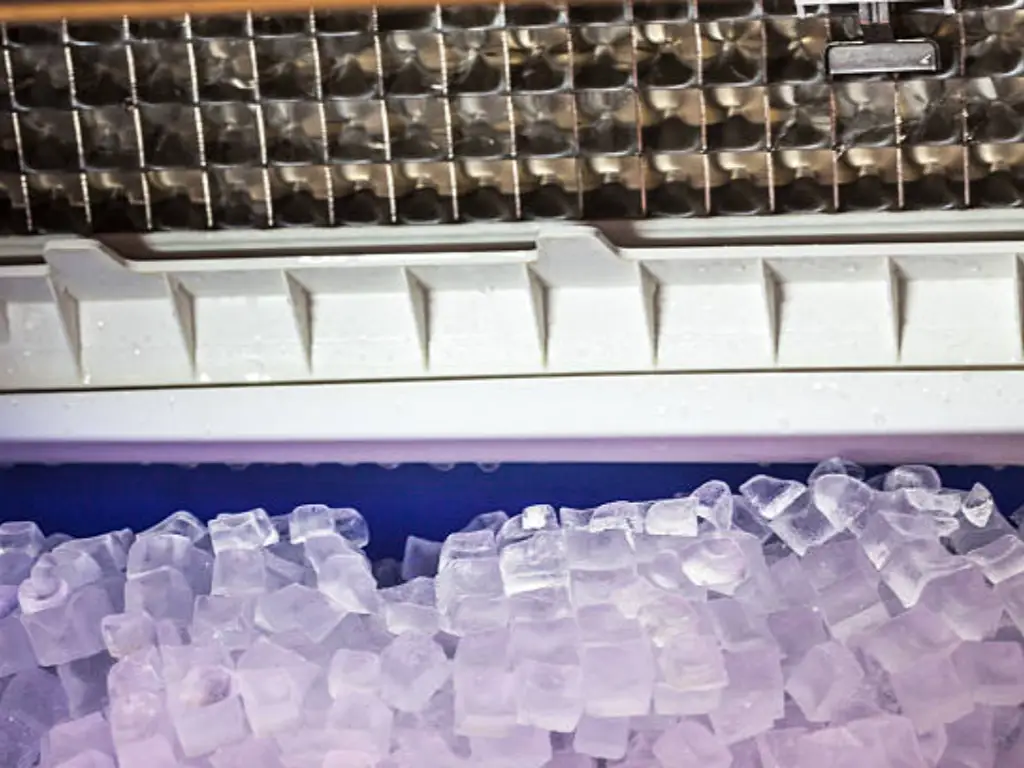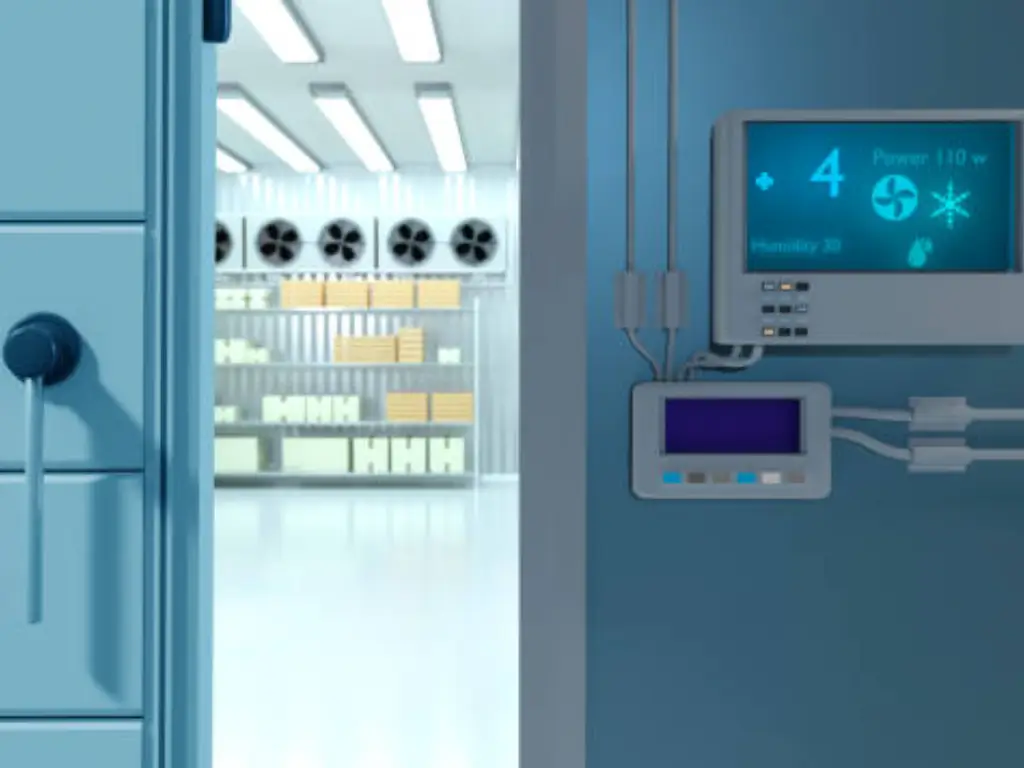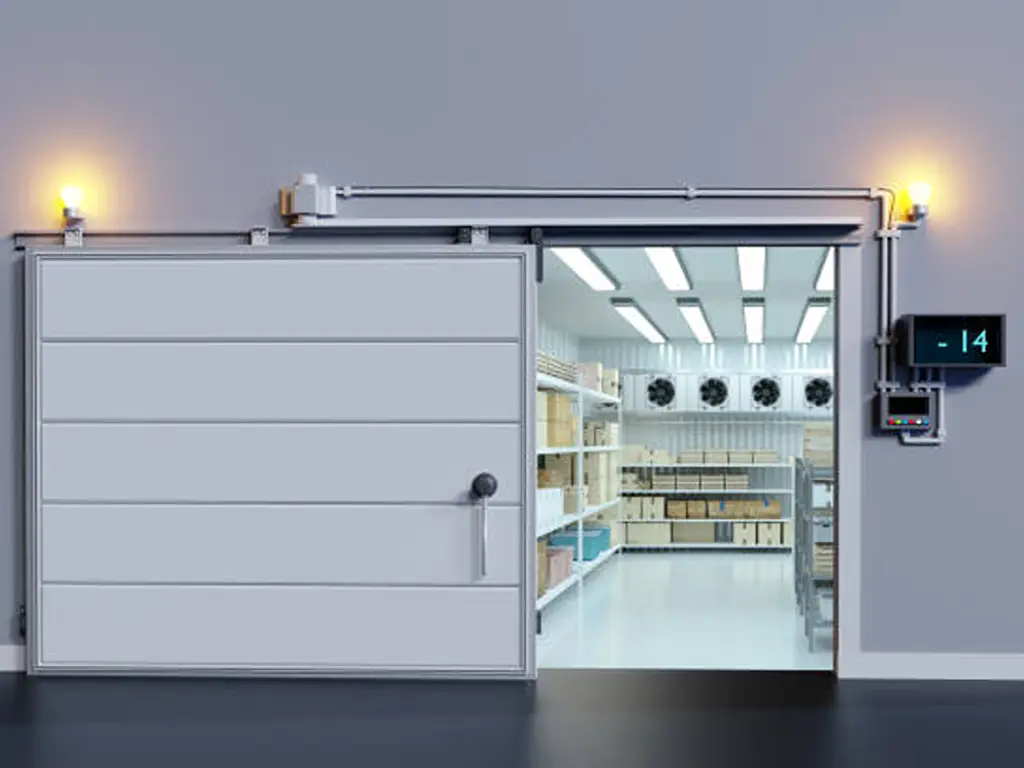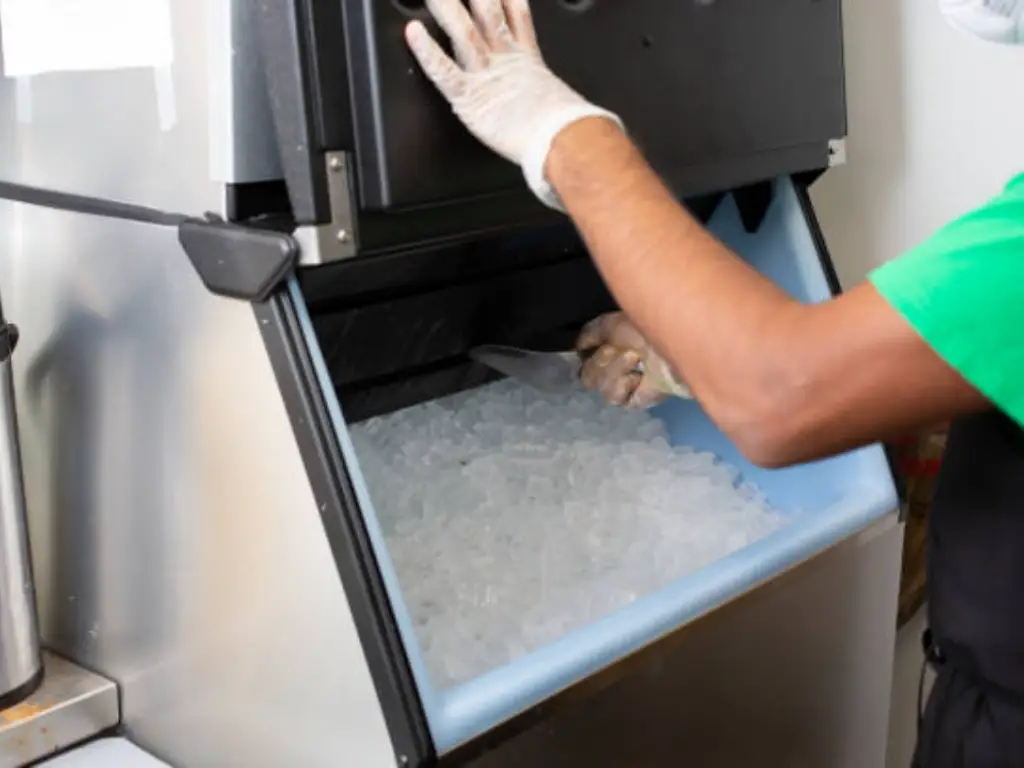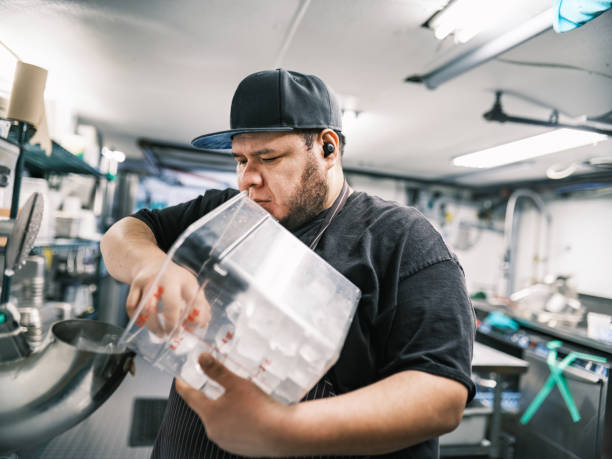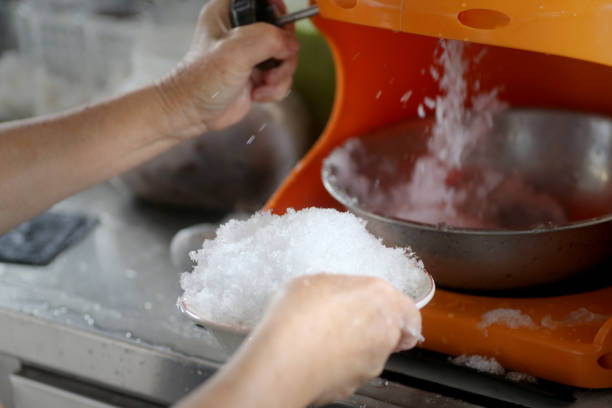Wenn Sie in der Food -Service -Branche sind, eine Eisfabrik laufen lassen, oder ein in sich geschlossenes Unternehmen verwalten, das groß angelegte Kühlung erfordert, Ein begehbarer Gefrierschrank ist eine Notwendigkeit. Aber bevor Sie in einen investieren, Es ist wichtig, die tatsächlichen Kosten zu verstehen.
Viele Faktoren beeinflussen den Preis von Bauen eines begehbaren Gefrierschranks, einschließlich seiner Größe, Anpassung, Installation, und laufende Betriebskosten. Während der Vorab -Kaufpreis erheblich ist, Die langfristigen Kosten-wie den Energieverbrauch und die Wartung-können genauso wichtig sein.
Also, Wie viel kostet ein kommerzieller begehbarer Gefrierschrank?? Lassen Sie es uns aufschlüsseln.
Anfangskosten eines begehbaren Gefrierschranks
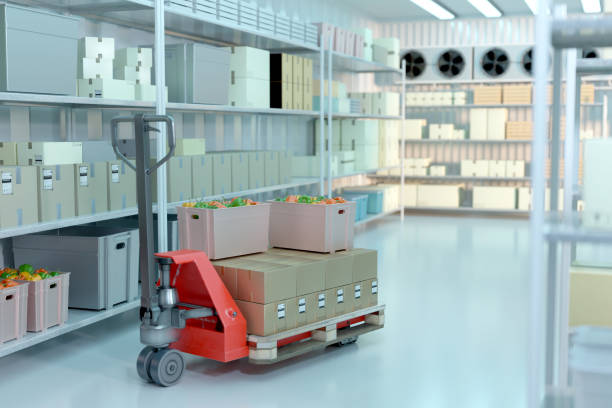
Die Kosten für einen kommerziellen begehbaren Gefrierschrank variieren je nach Größe, Merkmale, und Anpassung. Im Durchschnitt, Erwarten Sie zu bezahlen $100- $ 150 pro Quadratfuß Für ein Standardmodell. Zum Beispiel:
- A 6’X 6’ Gefrierschrankkosten $3,600- $ 5.400.
- Ein 8’X 8’ Einheit reicht von $6,400- $ 9.600.
- A 10’X 10’ Der Gefrierschrank kann kosten $10,000- $ 15.000.
Schlüsselfaktoren, die den Preis beeinflussen:
- Größe und Kapazität: Größere Einheiten erfordern mehr Materialien und Isolierung, Steigungskosten.
- Marke und Effizienz: Energy-zertifizierte Modelle kosten im Voraus mehr, reduzieren aber langfristige Energierechnungen.
- Anpassung: Merkmale wie verstärkte Bodenbeläge, zusätzliche Regale, oder erweiterte Kühlsysteme erhöhen den Preis.
- Standort: Versand- und Arbeitskosten variieren je nach Region, mit städtischen Gebieten, die oft höhere Raten ausgesetzt sind.
Beispiel: Ein Restaurant in New York City, das auf einen mit 8 'x 10' Energy-Star zertifizierten Gefrierschrank aufgerüstet wird $8,500, einschließlich kundenspezifischer Regale, im Vergleich zu $7,000 Für ein Basismodell.
Walk-In-Gefrierschrankinstallationskosten
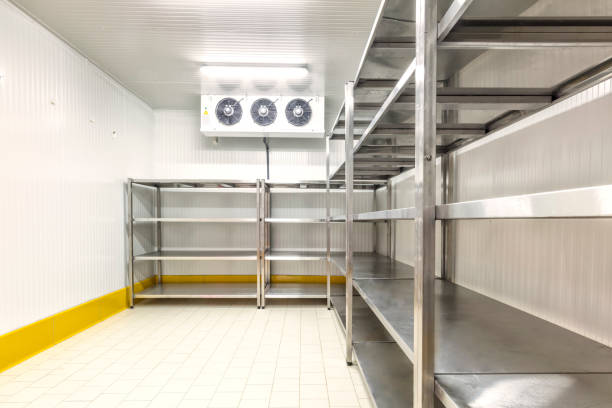
Jenseits der Einheit selbst, Die Kosten für begehbare Kühlerinstallationen können Ihrem Budget Tausende hinzufügen. Die Installationspreise reichen normalerweise von $2,000 Zu $10,000, Abhängig von mehreren Faktoren:
- Standortvorbereitung: Wenn Ihre Einrichtung nicht für einen begehbaren Gefrierschrank vorbereitet ist, Möglicherweise müssen Sie den Boden verstärken, Die ordnungsgemäße Belüftung einbauen, oder elektrische Verkabelung aufrüsten.
- Arbeitskosten: Einstellung von Fachleuten sorgt für die Einhaltung der Sicherheitsstandards, Die Arbeitskosten variieren jedoch je nach Standort und Komplexität.
- Genehmigung und Konformität: Abhängig von Ihrer Gegend, Möglicherweise benötigen Sie Gebäudegenehmigungen, Dies kann zu Ihren Installationskosten beitragen.
Für diejenigen, die einen Gefrierschrank in einem Restaurant einrichten, Lager, oder Eisfabrik, Die Zusammenarbeit mit erfahrenen Auftragnehmern ist unerlässlich, um kostspielige Fehler zu vermeiden und die Energieeffizienz zu gewährleisten.
Monatliche Betriebskosten
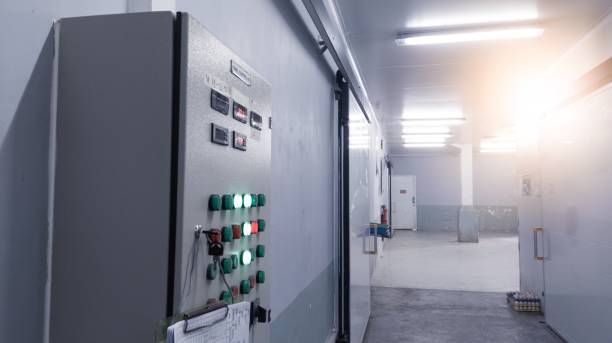
| Gefrierschrankgröße | Durchschnittspreis pro Monat |
| 6× 6 | £ 182.84 |
| 6× 8 | £ 182.84 |
| 8× 8 | £ 182.84 |
| 8× 10 | £ 278,82 |
| 8× 12 | £ 278,82 |
| 10× 10 | £ 278,82 |
| 10× 12 | £ 326.30 |
Jetzt, wo wir die Kosten für die Kosten versichert haben, Sprechen wir über die Betriebskosten für den begehbaren Gefrierschrank-ein Schlüsselfaktor für jeden Geschäftsinhaber.
Im Durchschnitt, Ein begehbarer Gefrierschrank verbraucht dazwischen 7,000 Zu 12,000 KWH pro Jahr, Übersetzung zu monatlichen Energiekosten von $150 Zu $500, Abhängig von der Größe, Isolationsqualität, und lokale Stromraten.
Mehrere Faktoren beeinflussen die Energiekosten:
- Energieeffizienz: Ältere Modelle neigen dazu, mehr Strom zu verbrauchen, während modern, Hocheffiziente Gefrierschränke können die Kosten erheblich senken.
- Türverwendung: Das ständige Öffnen und Schließen der Tür lässt warme Luft im Inneren, den Gefrierschrank dazu zwingen, härter zu arbeiten.
- Umgebungstemperatur: Gefrierschränke in heißen Umgebungen (Z.B., Küchen) Erfordern mehr Energie, um niedrige Temperaturen aufrechtzuerhalten.
Um die Betriebskosten für den Gefrierschrank zu senken, in gutinselige Modelle investieren, Begrenzen Sie die Türöffnungen, und regelmäßige Wartung durchführen.
Wartungs- und Reparaturkosten
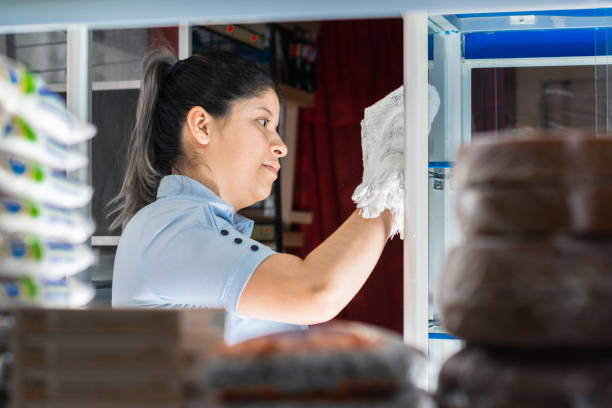
Die regelmäßige Wartung verlängert die Lebensdauer eines Gefrierschranks (Typischerweise 15–20 Jahre) und sorgt für Effizienz. Die jährlichen Wartungskosten reichen von $200 Zu $500, Abdeckung:
- Reinigungskondensatorspulen.
- Türdichtungen inspizieren und ersetzen.
- Thermostate kalibrieren.
Notfallreparaturen, wie Kompressorfehler, kann kosten $500- 3.000 Dollar. Ersatzteile variieren:
- Kompressor: $1,500- $ 2.500.
- Türdichtungen/Dichtungen: $50- $ 200.
Die Vernachlässigung der Wartung erhöht den Energieverbrauch und die Reparaturfrequenz, Planen Sie also halbjährliche Untersuchungen.
Tipp: Investieren Sie in einen Wartungsvertrag mit einem seriösen Dienstleister, um Probleme frühzeitig zu erfassen und kostspielige Ausfallzeiten zu vermeiden.
Schlüsselfaktoren, die die langfristigen Kosten beeinflussen
Mehrere Variablen wirken sich auf die Gesamtbesitzkosten aus:
- Isolationsqualität: Hochwertige Materialien wie Polyurethan, Erfüllung der Energieunabhängigkeit und Sicherheitsgesetz (Eisa) Standards, Energieverlust reduzieren.
- Klima und Lage: Gefriergeräte in warmen Klimazonen oder schlecht belüfteten Gebieten erfordern mehr Kühlleistung.
- Nutzungsmuster: Häufige Türöffnungen oder Speichern heißer Lebensmittel erhöhen den Energieverbrauch.
- Ausrüstung Alter: Ältere Einheiten sind weniger effizient und erfordern mehr Reparaturen.
Tipps zur Reduzierung des begehbaren Gefrierschrankkosten
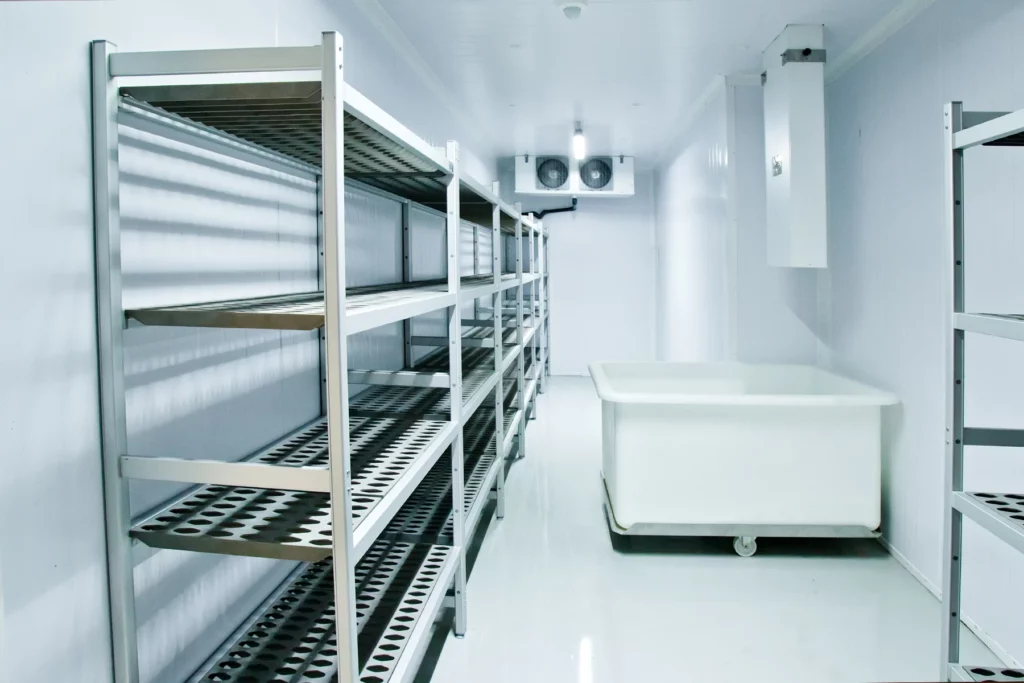
Richtige Installation & Die Konstruktion ist entscheidend
Ihr begehbarer Gefrierschrank oder Kühler muss ordnungsgemäß gebaut und installiert werden, um die Energieeffizienz aufrechtzuerhalten. Fachkundige Bauherren verstehen die Details, die für eine optimale Leistung und langfristige Haltbarkeit erforderlich sind. Ein ordnungsgemäßes anfängliches Setup ist der Schlüssel zur Kosteneffizienz, Und wie Sie später sehen werden, Auch seine Platzierung kann sich auf die Energieeinsparung auswirken.
Präzise Isolierung schilder gegen Kletterkosten
Ein gut konstruierter begehbarer Gefrierschrank oder Kühler sollte eine ordnungsgemäße Isolierung vom Boden bis zur Decke und entlang der Türen aufweisen. Sein Hauptzweck ist es, Wärme herauszuhalten und kalt in, erreicht durch Verhinderung einer externen Wärmeübertragung. Die Isolationsstandards werden durch das Gesetz über die Energieunabhängigkeit und das Gesetz über Sicherheitsgröße festgelegt (Eisa), Es ist daher von entscheidender Bedeutung, diese Anforderungen beim Kauf und Installieren eines begehbaren Geräts zu beachten.
Ort ist in mehrfacher Hinsicht von Bedeutung
Der Standort Ihres Betriebs kann beeinflussen, wie hart Ihre begehbare Einheit erforderlich ist, um die richtige interne Temperatur aufrechtzuerhalten und die Energiekosten überschaubar zu halten. Sowohl heiße als auch kalte Umgebungen erfordern unterschiedliche Ansätze, um die Temperaturen effektiv zu regulieren. Zusätzlich, Die spezifische Platzierung Ihres begehbaren Ins in Ihrem Haus kann den Energieverbrauch beeinflussen.
Zum Beispiel, Einheiten in der Nähe eines heißen Herdes oder im direkten Sonnenlicht benötigen mehr Energie, um kühl zu bleiben, was zu höheren Energierechnungen führt. Denken Sie daran, dass Sie Ihren Lebensmittelbereich entwerfen, Die spätere Umstellung der Einheit kann eine Herausforderung sein.
Die Temperatur der gespeicherten Gegenstände beeinflusst den Energieverbrauch
Wenn Sie heiße oder warme Gegenstände direkt aus der Küche in den Gefrierschrank legen. Heiße Lebensmittel oder Flüssigkeiten erfordern mehr Energie zum Abkühlen als bei Raumtemperatur. Während es sicher ist, heißes Essen in einer kalten Einheit zu lagern, Es führt zu einem Temperaturanstieg im Wanderer, den Kompressor zwingen, härter zu arbeiten, um ihn wieder nach unten zu bringen. Um zu verstehen, warum Ihre Energiekosten möglicherweise steigen, Betrachten Sie die Temperatur der von Ihnen gespeicherten Gegenstände.
Wie oft wird der begehbare Gefrierschrank geöffnet & Geschlossen
Ähnlich wie bei einem Hauskühlschrank, Häufige und längere Türöffnungen erhöhen den Energieverbrauch in Ihrem begehbaren Gefrierschrank oder Kühler. In geschäftigen Foodservice -Operationen, Konstanter Eingang und Ausgang lassen die Außentemperatur eintreten lassen, Die Einheit arbeitet härter, um eine stabile Temperatur aufrechtzuerhalten und die Nahrung sicher zu halten.
Dies kann zwar in Gebieten mit hohem Handel unvermeidlich sein, Es ist wichtig, den Mitarbeitern darüber zu informieren, dass übermäßige Nutzung von Türen zu höheren Energierechnungen führen kann. Das Installieren von Vinylstreifen an begehbaren Türen ist auch eine effektive Möglichkeit, kalte Luft im Gerät zu halten.
Sind begehbare Gefrierschränke die Investition wert?
Während die kommerziellen begehbaren Gefrierkosten erheblich sein können, Es ist eine notwendige Investition für viele Unternehmen. Der Schlüssel ist, den anfänglichen Kaufpreis auszugleichen, Installationskosten, und langfristige Betriebskosten, um eine fundierte Entscheidung zu treffen.
Durch Auswahl eines energieeffizienten Modells, Aufrechterhaltung der regelmäßigen Wartung, und Optimierung der Nutzung, Sie können Einsparungen maximieren und gleichzeitig die Effizienz Ihres begehbaren Gefrierschranks sicherstellen. Vor dem Kauf, Führen Sie immer eine umfassende Kostenanalyse durch, um die beste Option für Ihr Unternehmen zu ermitteln.
Also, Ist ein begehbarer Gefrierschrank die Kosten wert? Wenn er mit Bedacht ausgewählt und ordnungsgemäß gepflegt wird - absolut!
FAQs
Welche Wartung für einen begehbaren Gefrierschrank erforderlich ist?
Regelmäßige Wartung umfasst die Reinigung von Kondensatorspulen, Türdichtungen überprüfen, und kalibrieren Sie den Thermostat, mit Kosten, die normalerweise von reichen von $200 Zu $500 pro Jahr. Notfallreparaturen, wie das Ersetzen eines Kompressors, kann zwischen $500 Und $3,000.
Wie lange dauert ein begehbarer Gefrierschrank??
Mit ordnungsgemäßer Wartung, Ein begehbarer Gefrierschrank kann dauern 15 Zu 20 Jahre. Jedoch, Ältere Einheiten erfordern möglicherweise häufigere Reparaturen und verbrauchen mehr Energie, Reduzierung der Effizienz.
Kann ich heißes Essen in einem begehbaren Gefrierschrank aufbewahren??
Während es sicher ist, heißes Essen in einen begehbaren Gefrierschrank zu legen, Es kann den Energieverbrauch erhöhen. Heiße Gegenstände erhöhen die innere Temperatur des Gefrierschranks, Der Kompressor arbeitet härter, um ihn wieder auf die gewünschte Temperatur zu bringen.

